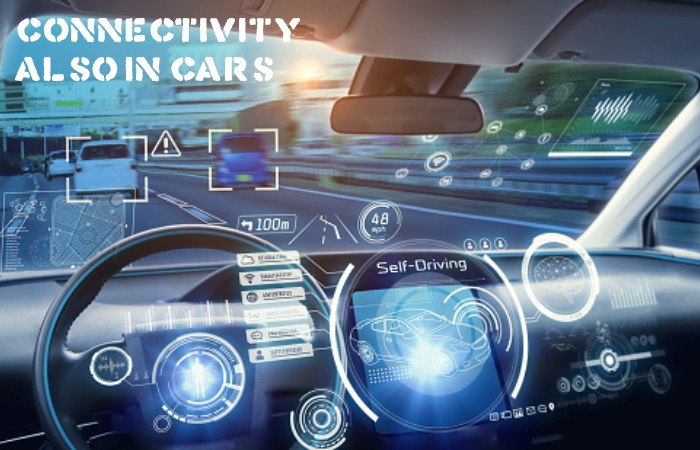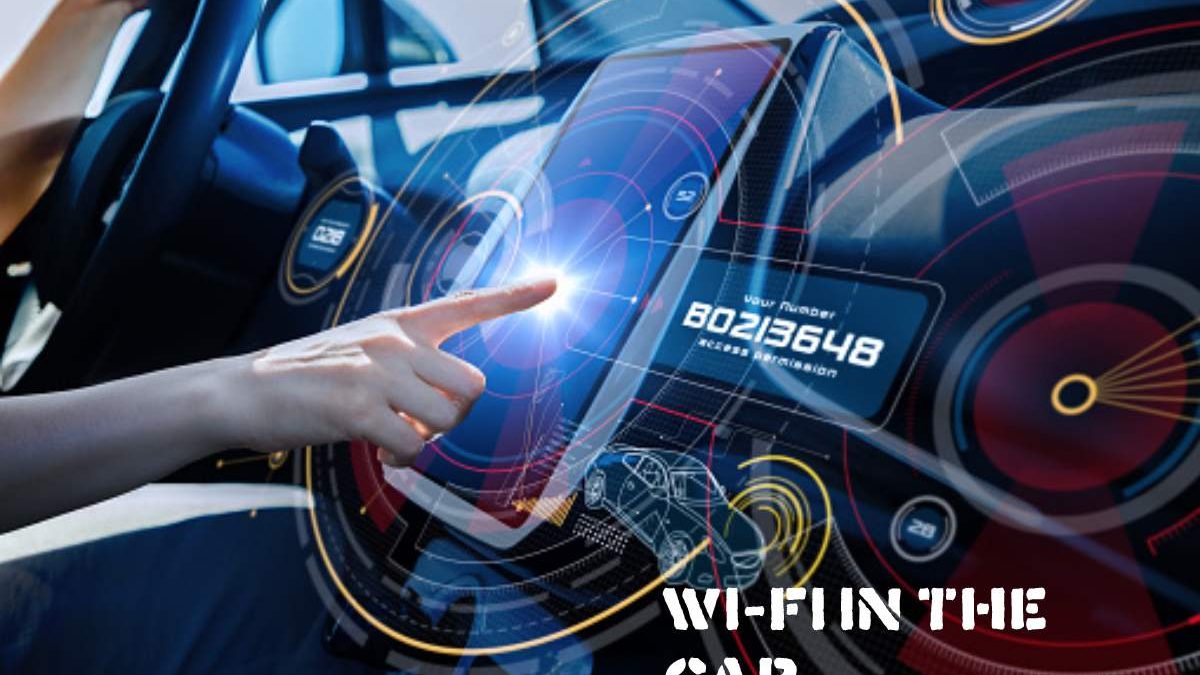Wi-Fi today we have the impression that everything is connected to the Internet, and what is not connected to this network seems outside the world. It is enough to have our smartphone, tablet or computer, but these advances have also reached smart speakers or televisions. And this is where a new question and unknown arises, why don’t cars also remain as another device?
Table of Contents
Connectivity also in cars

This concept can be pretty helpful for family cars, especially where children would have the ability to connect to the network to play games or watch live content. To get Internet in the car, it is necessary to have a series of requirements. Data consumption is a factor that works against this aspect since if we have Wi-Fi in the car, we must also consider that the signal would not be entirely stable as we are always on the move.
But at the end of the diurnal, it is the same quantity and quality that we have in a home or mobile. It is much more comfortable aimed at many people to have Wi-Fi in the car, especially for long trips, since they assimilate it to having a connection to the network as if they were at home.
And once we decide, we have to see that there are different options to have Wi-Fi in the car, some being more expensive than others, but we also have to consider the operators and the rates that we can acquire at that time.
Cars with built-in Wi-Fi
The fastest option to have Internet in the car is to look for a vehicle that already has this technology integrated. However, opting for the most immediate is not always correct. Many car manufacturers include in their models an integrated eSIM and an antenna that allows you to obtain a connection as if it were a home router. We should highlight the Opel brand and its Open On Star technology, Audi with Audi Connect, BMW with BMW Car Hotspot LTE or Toyota with Toyota Hotspot.
The first two options are characterize by offering an integrated eSIM, while the case of BMW and Toyota is different because we must place these elements ourselves. However, this option can be even more beneficial because, in this way, we are the ones who install the SIM, which we can adapt to the different rates of the manufacturer itself and the networks that it is supporting at that time.
– Opel On Star. Opel is one of the main agitators in the market when it comes to connectivity, thanks to the technology designed to have an Internet connection. The German brand offers On Star services free for the first year and at the cost of 100 euros every 12 months for the following years. Through a 4G connection, a wireless network is created inside the vehicle so that the occupants can have that connection of up to seven devices connected at the same time.
The car has a built-in SIM card, so there is no need to search for an outside item. This, in part, has its advantages and disadvantages. The positive is that we will not have to worry about looking for a SIM for the car. But neither will we have a choice about other rates and operators that offer this service, which would be provided by the operator that has the agreement with Opel.
– Audi Connect. Audi has also been one of the pioneering brands in developing this service for its cars, being one of the brands that have been betting on this connectivity for the longest time. Here we must highlight two different connectivity cases since some cars have a module in which a standard size SIM can be inserted. In contrast, the Audi A4, Audi Q7 or the new Audi A3 have an integrated eSIM or a virtual SIM.
On the other hand, Audi’s Wi-Fi network can support up to eight devices connected at the same time, as well as the connection reaches 4G speeds. In the alternatives of the models with the integrated eSIM, you can choose between different tariffs provided by the same manufacturer depending on the duration and the countries. Or use a SIM from our operator if we see that it has better conditions for our interests.
– BMW Car Hotspot LTE. BMW has also not wanted to be left behind in the world of connectivity and has also decided to bet on implementing Wi-Fi in its cars, although in a different way than those mentioned above. This brand device is installed in the central armrest and requires a user SIM card to create an Internet network.
– Toyota Hotspot. In addition to German cars, there are also other options, such as the one offered by Toyota, with a system similar to that of BMW, which consists of a router that is compatible with any model of the Japanese brand. Here the user has to insert his own SIM card to create an Internet network to which up to five devices can be connected, although it is true that its price is somewhat high (300 euros).
MiFi device to have Wi-Fi in the car
These options are fine if we have a car of these brands. But what happens if our car is from another manufacturer or if it does not have vehicles that support this option. At first glance, it might seem that we are doomed not to have a connection in the car. But nothing is further from the truth since we can always use MiFi devices.
We are talking about devices that serve as small routers connected to the car to obtain electricity. Although sometimes they work with a battery or wirelessly. In other words, it is a router that connects to the outside through an inserted. SIM and not through a Fiber or ADSL cable. However, they do not always have to be use in a car. But this is where they get the most out of it. If what we are looking for is to have Wi-Fi in the car.
In general, they are elements that allow the connection of between five and ten devices to have access to vary. Although the speeds may be different, they usually offer a maximum of 150 Mbps. But here, it is also necessary to know that each model can suffer variations in. The quality of the signal and the speed that the operator can offer us. The most popular models are the following:
- Huawei E5573C. This system has speeds of up to 150 Mbps and a maximum of 10 devices. With a price of 67.67 euros.
- TP-Link Router 4G. It is a device with speeds of up to 150 Mbps. A 2,000 mAh battery and a maximum of devices, which can be found for 61.72 euros.
- TP-Link Router 4G. This device is similar to the previous one, but a screen has been add, increasing its price to 83.78 euros.
- Like it well Router 4G. With slightly less speed than the previous ones (100 Mbps). It can cover up to 10 devices for only 33.89 euros.
- In addition, we can also find the MiFi devices of the operators. In Spain, the two leading companies that offer this service are Movistar and Orange. Which are integrate with the rates of the operators themselves.
– Movistar Car. It has been a recent appearance that allows. You to have between 3 and 4 Gb of data in 4G mode for 3 euros per month. And also offers a navigation system. Alerts, locations and more extra functions.
– Orange Car WiFi. It is an invention that arrived in 2015 with. Huawei as a collaborator and is a case similar to that Movistar. With a 4G router that allows. A connection with speeds of up to 120 Mbs and up to 10 connected devices. The same works with a duplicate SIM card.
Smartphones as the access point to have Internet
Another option that. We have to be able to connect to the Internet in the car is to use the mobile. As if it were a router. Whether through a charging cable or USB to connect it to a computer or using the data sharing mode. We must also have a reasonable rate that allows us to spend them without worrying. The only disadvantage is the battery, but we can also charge it with the car adapter.
What is the most reasonable rate?
The above options need to have a fee with the operator. Either duplicate the SIM with the current price or use a different SIM. It is best to opt for the company that offers us the most data in these options.
In short, these are the alternatives that we currently have to be able to have Internet in the car; which one would you choose?

